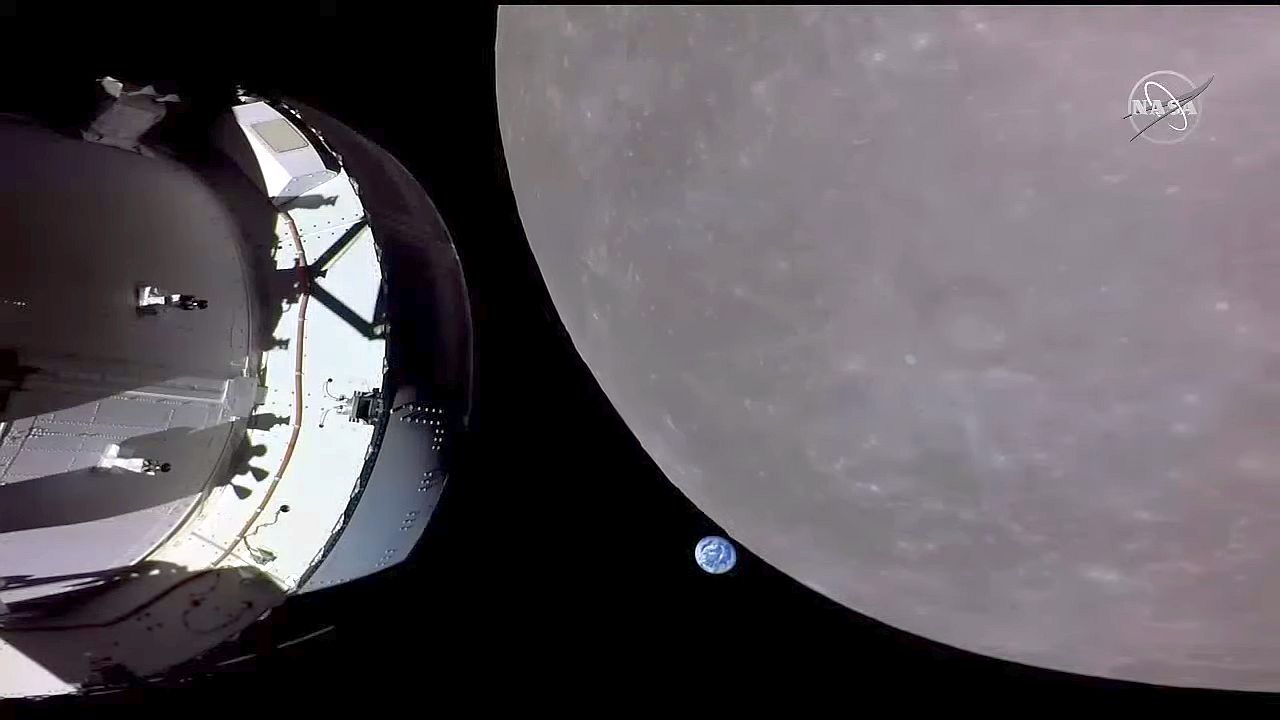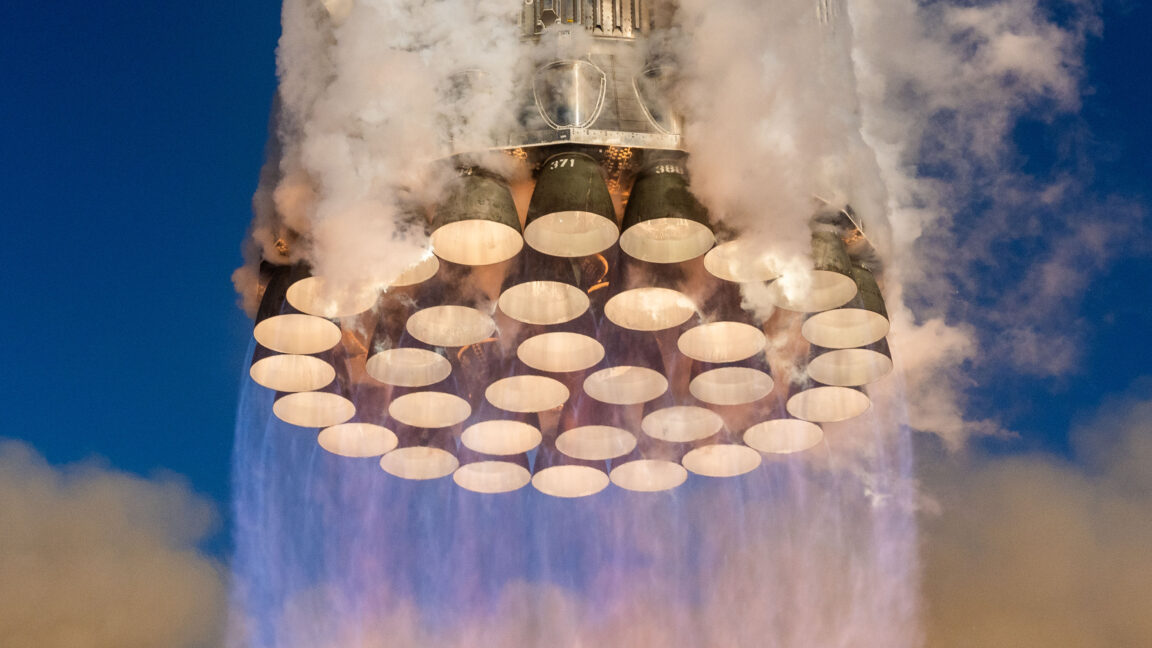Although NASA is unlikely to speak about it publicly any time soon, the space agency is privately considering modifications to its Artemis plan to land astronauts on the surface of the Moon later this decade.
Multiple sources have confirmed that NASA is studying alternatives to the planned Artemis III landing of two astronauts on the Moon, nominally scheduled for September 2026, due to concerns about hardware readiness and mission complexity.
Under one of the options, astronauts would launch into low-Earth orbit inside an Orion spacecraft and rendezvous there with a Starship vehicle, separately launched by SpaceX. During this mission, similar to Apollo 9, a precursor to the Apollo 11 lunar landing, the crew would validate the ability of Orion and Starship to dock and test habitability inside Starship. The crew would then return to Earth. In another option NASA is considering, a crew would launch in Orion and fly to a small space station near the Moon, the Lunar Gateway, and then return to Earth.
To discuss these options, Ars asked for an interview with Catherine Koerner, a deputy associate administrator who oversees Exploration Systems Development for NASA. Instead, the space agency offered a noncommittal statement.
"NASA continues to work toward the Artemis II crewed test flight in September of 2025 and the Artemis III test flight to land astronauts near the lunar South Pole in September of 2026," the statement read. "The agency evaluates element progress and status on a daily basis and uses that data to make decisions at the right time for each mission as a part of prudent programmatic and mission management. Should a particular hardware element not be available to support a mission as scheduled or planned, NASA will evaluate the readiness of available hardware for options to make those decisions with crew safety as the number one priority."
An unrealistic timeline
The space agency's date for Artemis II is optimistic but potentially feasible if NASA can resolve the Orion spacecraft's heat shield issues. A lunar landing in September 2026, however, seems completely unrealistic. The biggest stumbling blocks for Artemis III are the lack of a lander, which SpaceX is developing through its Starship program, and spacesuits for forays onto the lunar surface by Axiom Space. It is not clear when the lander or the suits, which NASA only began funding in the last two to three years, will be ready.
There are also concerns about the complexity of Artemis III. It will require a number of previously untested steps, including an Orion-Starship rendezvous and docking in lunar orbit; humans flying inside of Starship in space; Starship going down to the surface and coming back up to dock with Orion; and more. Mission planners would be more comfortable if they could, in NASA parlance, "buy down the risk" of Artemis III by validating some of these delicate maneuvers before the lunar landing mission.
This is why NASA has asked SpaceX to look at a mission where Orion would rendezvous with the Starship vehicle in orbit around Earth. Such a mission—whether called Artemis IIS or Artemis III—would solve a lot of problems for the space agency and appears to be the preferred option at this time. Critically, it would verify the ability of the two spacecraft to dock in an environment where, if there were a problem, it would be much easier for the crew to return safely home. It would also validate the ability of astronauts to live inside Starship and perform some ascent and descent maneuvers.
Perhaps just as importantly, such a mission would allow the space agency to avoid a long gap between Artemis II and Artemis III. No one is quite certain how long it will take SpaceX to deliver a Starship vehicle that is capable of landing safely on the Moon and then taking back off. The company is known for moving very fast in the development phase, but it still has a tremendous amount of work to do with Starship.
SpaceX must get the vehicle flying regularly—which it is close to doing—and then begin conducting refueling tests. These are necessary so that SpaceX can refuel Starship in orbit for a lunar mission, and nothing similar has ever been attempted on this scale. SpaceX must then learn to operate Starship in deep space, land on the Moon, and, critically, take off from the lunar surface a few days later to re-rendezvous with Orion so the astronauts can come home. All of this can be solved by engineering and testing, but it will take time.
A difficult decision
A mission profile that has an Earth-orbit rendezvous with Orion would obviate the need for a lot of that work. Instead, SpaceX would simply need to demonstrate the capability to get Starship into low-Earth orbit with a functional life support system. This is very doable in the next two years.
The Starship-Orion mission has another benefit that sets it apart from a Lunar Gateway mission: It can be done without a powerful upper stage on the SLS rocket. For its first three Artemis missions, NASA is using an "interim" upper stage for the Space Launch System rocket based on the Delta rocket and manufactured by United Launch Alliance. Now that production of the Delta rockets has ceased, it is not clear whether more of these interim stages could be produced—at least not at a reasonable cost.
Whereas a "Gateway" mission for Artemis would require the use of an interim upper stage to blast Orion out to lunar orbit, the Earth-orbit rendezvous mission would not. Sources indicate that a core stage alone could likely combine with Orion to put the vehicle into a high enough orbit for such a mission. This would allow NASA to save the final interim upper stage for the first lunar landing mission later in the decade. After that, NASA will transition to a more powerful second stage for the Space Launch System rocket, the Exploration Upper Stage. But this new stage will not be ready before 2028.
NASA is clearly sensitive about revising the Artemis plans because it is facing a budget cut, and also perhaps because this is a presidential election year. It seems probable that the space agency would not want to announce further delays or a change in Artemis plans until next year at the earliest. Sources told Ars that no final decisions have been made on whether to revise Artemis III.
Another reason for secrecy is that the agency wants to make clear to policymakers that it is holding its Artemis contractors accountable for their performance. In its statement in response to questions from Ars, NASA said, "All partners must make every effort to perform on schedule to ensure that NASA can accomplish the agency's Moon to Mars exploration goals."
And back in January, when Ars questioned the likelihood of a 2026 landing date during a teleconference on the Artemis missions, a senior NASA official named Jim Free sought to cast responsibility back on NASA's partners.
"It's interesting because we have 11 people in industry on here that have signed contracts to meet those dates," Free said of the teleconference, which included representatives from SpaceX, Axiom, and the other companies. "So from my perspective, the people in industry are here today saying we support it. We've signed contracts to those dates on the government side based on the technical details that they've given us, that our technical teams have come forward with. It is of course not without risk."
Indeed, it is not.


